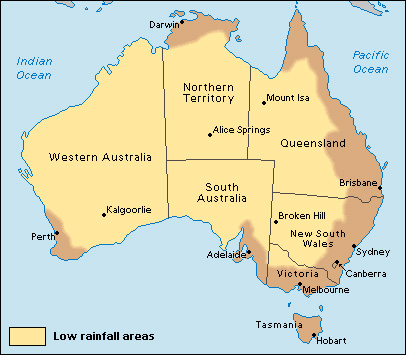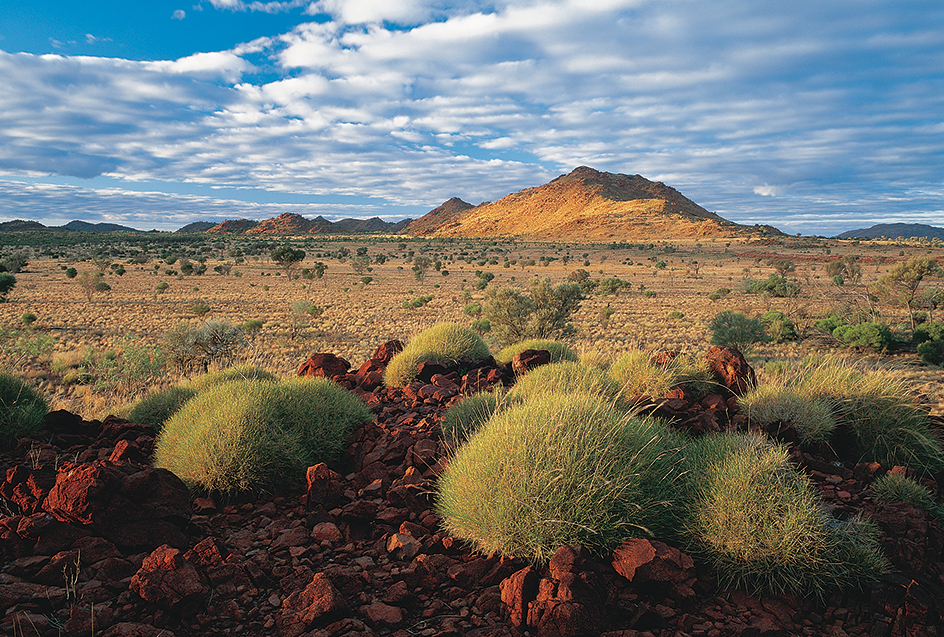Outback is a term that refers to the rural interior of Australia and its unique characteristics. Depending on how the outback is defined, it covers from about 75 to 80 percent of the continent. Some people use the term outback to describe all thinly populated areas away from Australia’s coastal cities. Others apply the term to only those areas with low rainfall. The land and climate in much of the outback are harsh and variable. Many people associate life in the outback with a sense of adventure, individualism, and isolation.

Millions of years of weathering and erosion have flattened the outback’s landscapes and reduced the quality of the soil. Most mountains in the region stand less than 3,900 feet (1,200 meters) tall. Large deserts with plant-covered sand dunes stretch across much of the outback. Since the late 1800’s, large areas have been used for grazing sheep and cattle. The outback also has rich mineral resources, and mining is an important activity.
The outback is famous for its wide variety of unusual wildlife. The region’s plants include spinifex grass and eucalyptus and acacia trees. Kangaroos and other marsupials live there, as do large flightless birds called emus.

Less than 10 percent of Australia’s people live in the outback. Many Aboriginal Australians live there, usually in small, isolated communities or on livestock stations (ranches). Outback residents lack easy access to health care and education. As a result, they generally have poorer health and fewer career opportunities than people in the cities. A special aviation service called the Royal Flying Doctor Service provides medical treatment to people in remote areas. Also, schools of the air help students in isolated regions communicate with teachers by using radio, telephone, and computer equipment.

The word outback comes from the phrase “out in the back country.” This saying was first used in the 1800’s to describe Australian frontier areas where the British colonial governments had little control.
